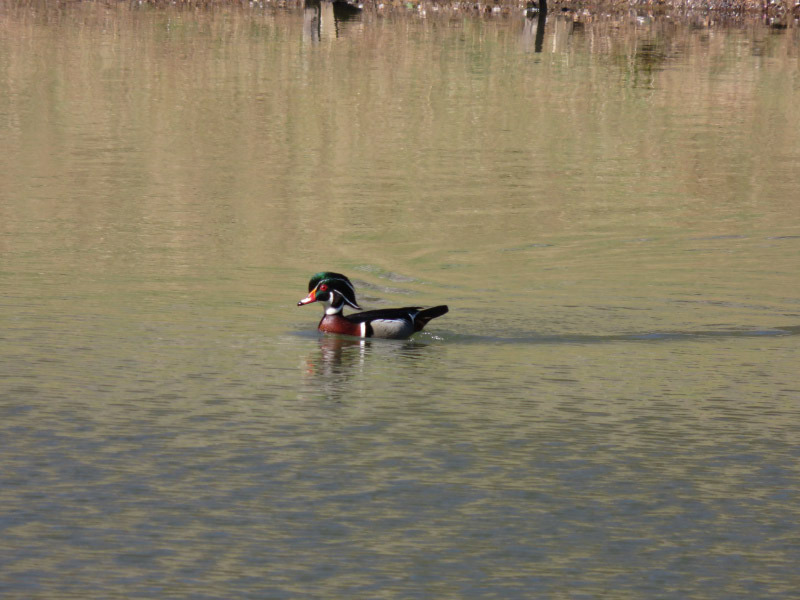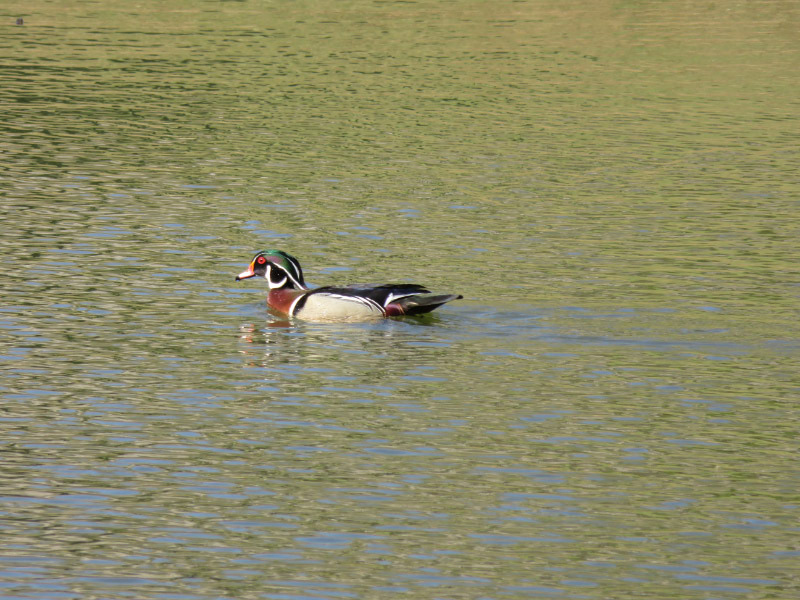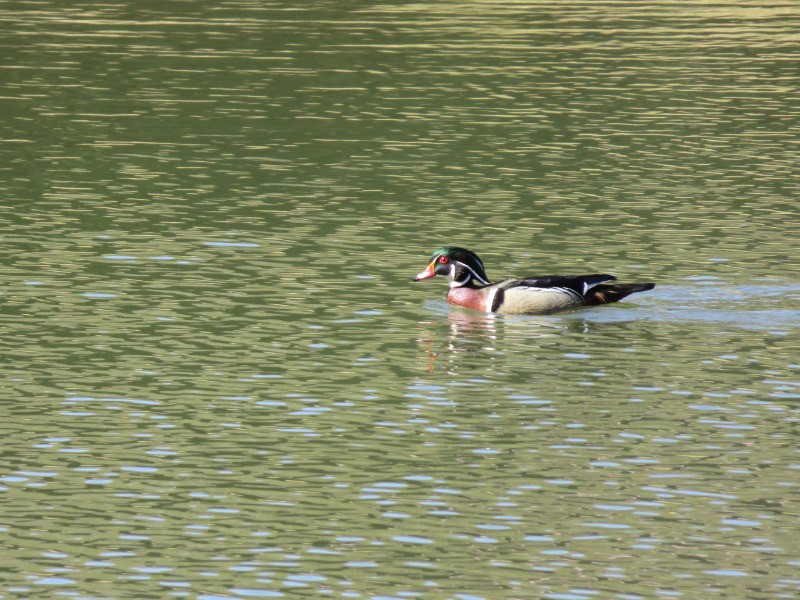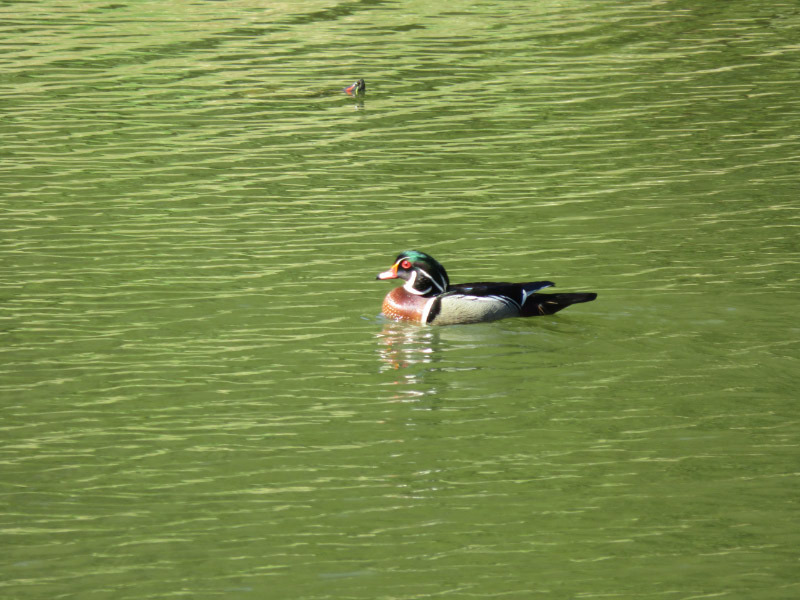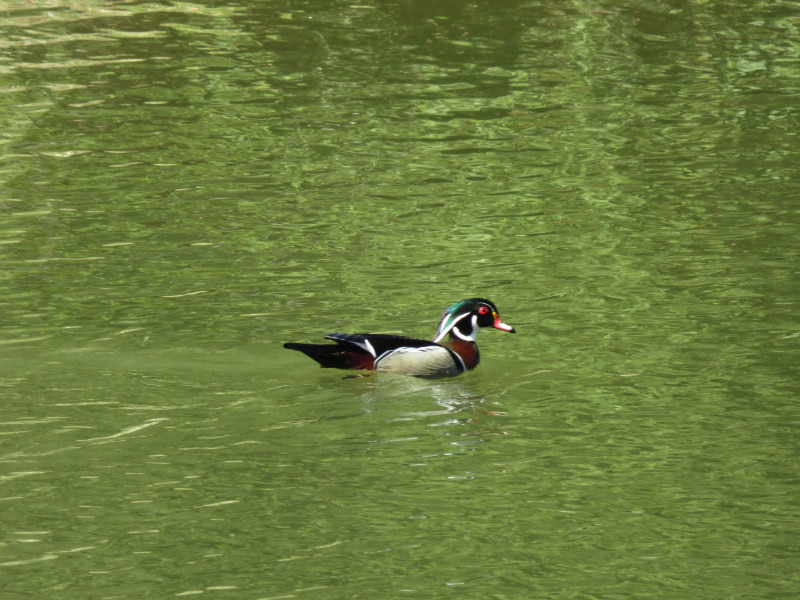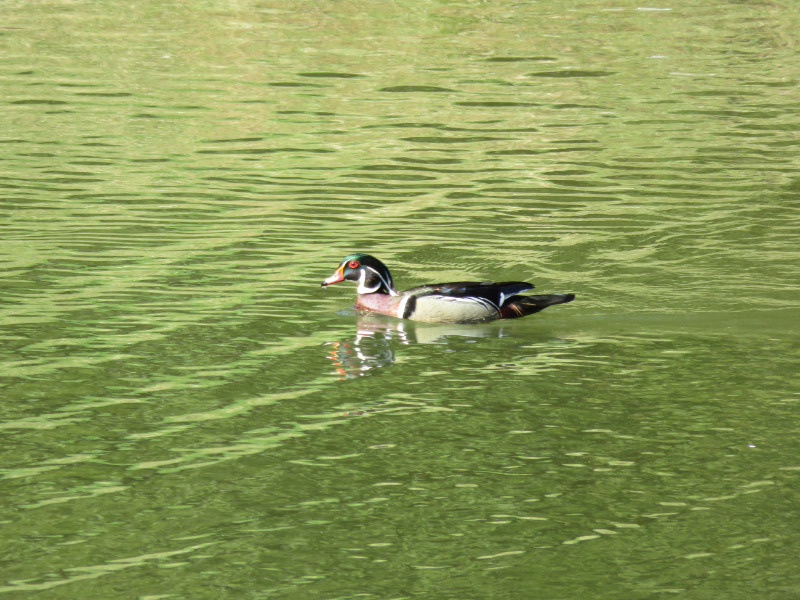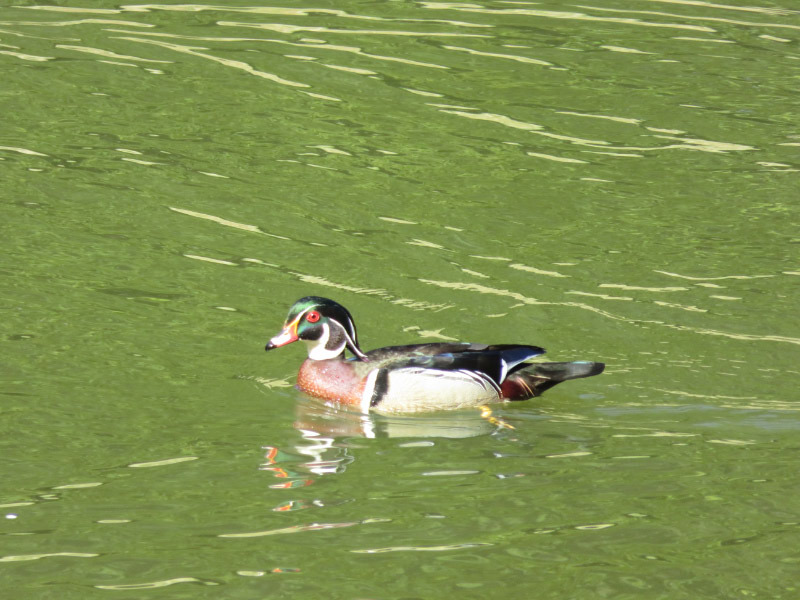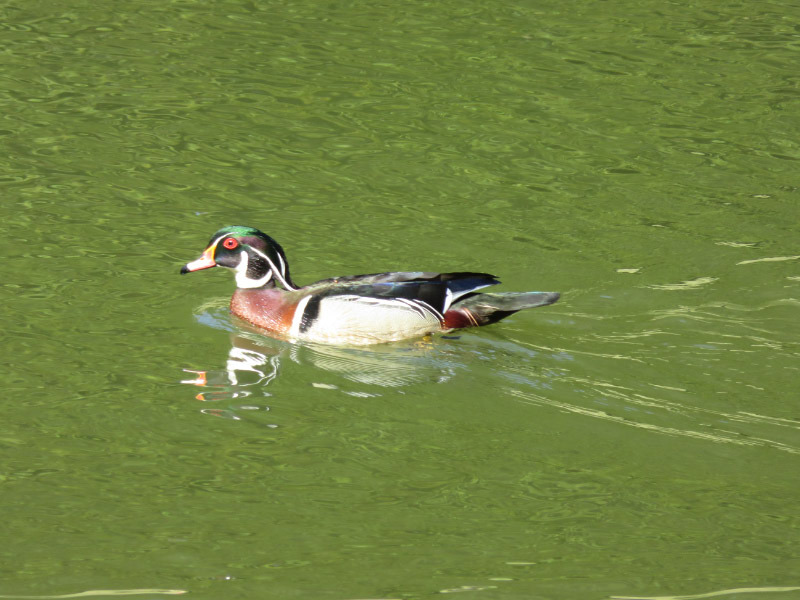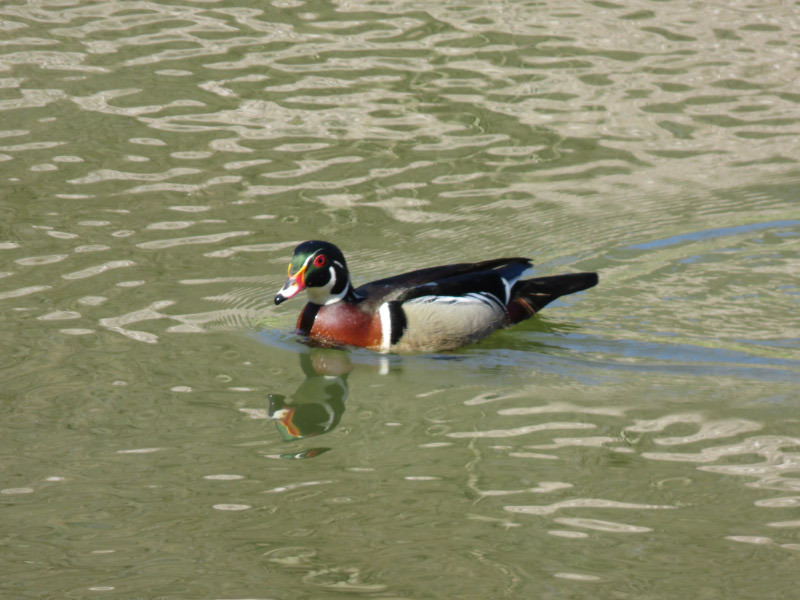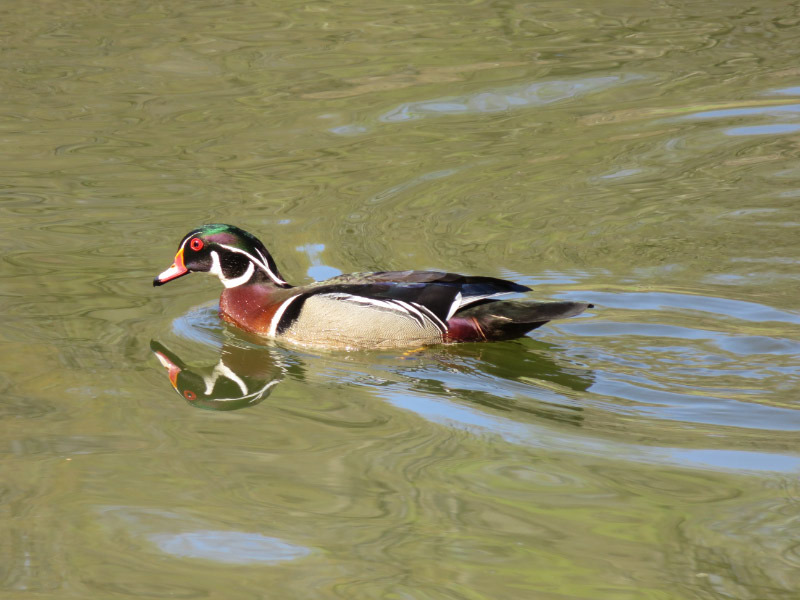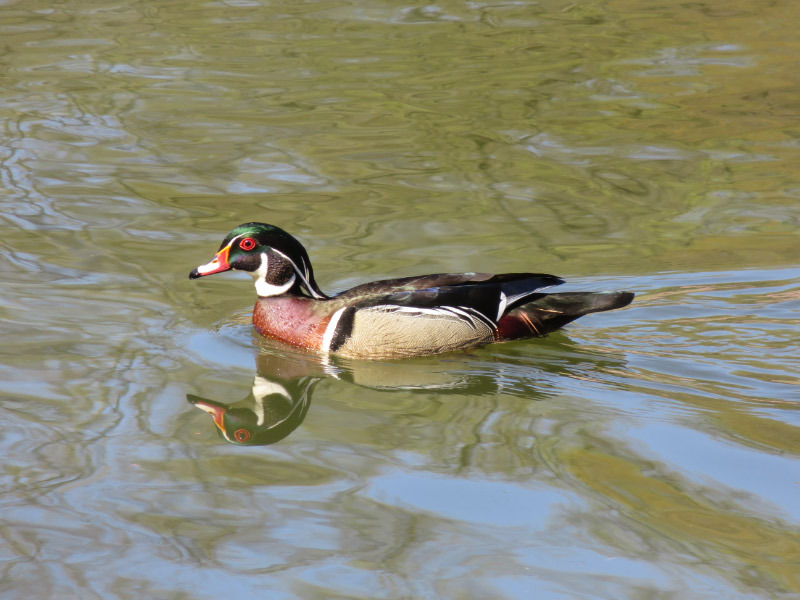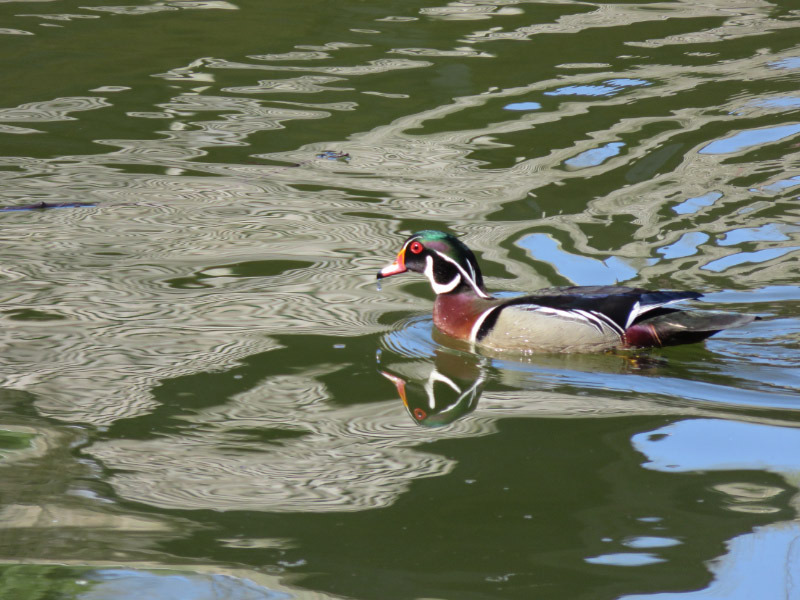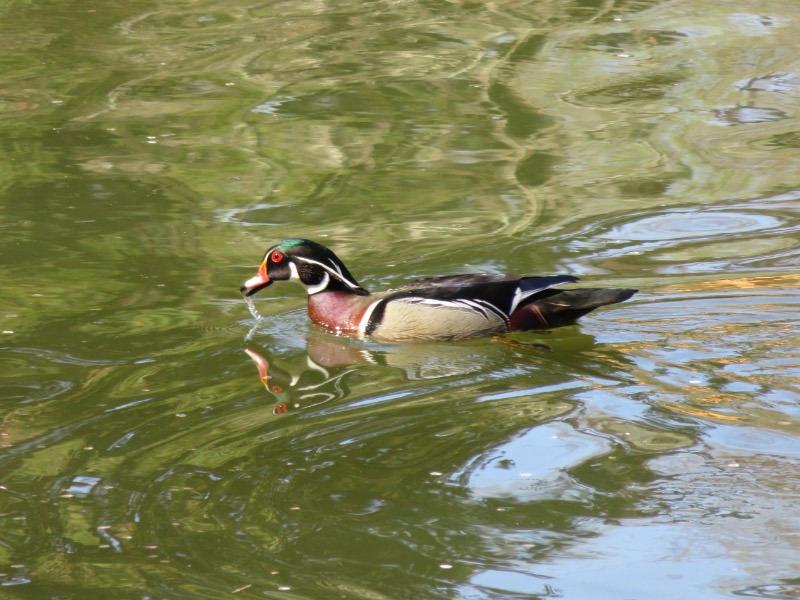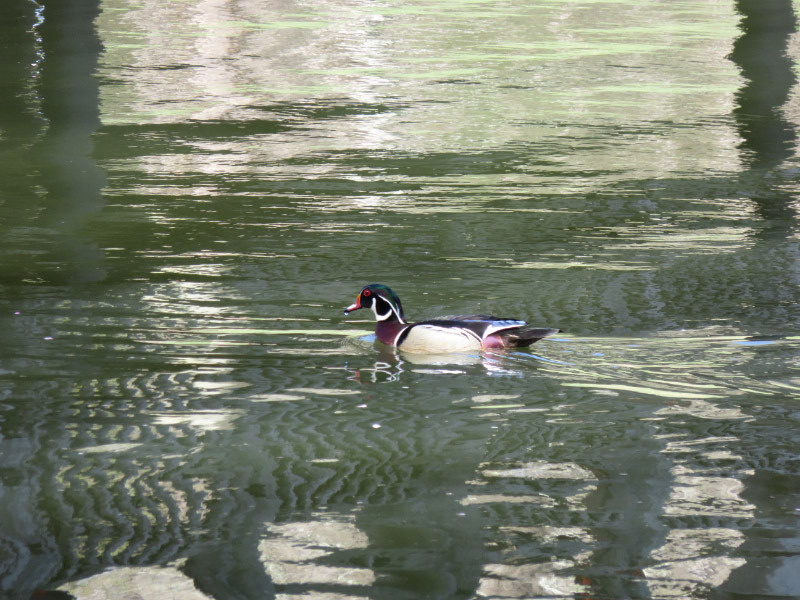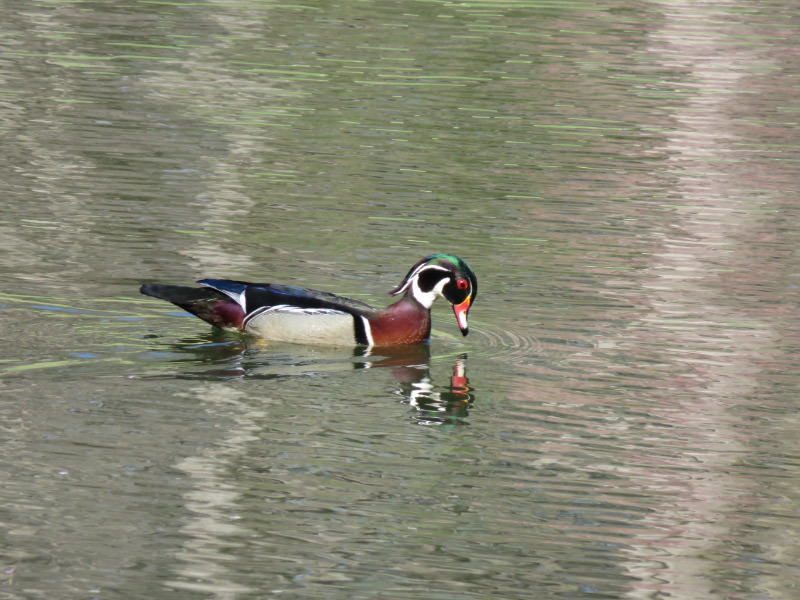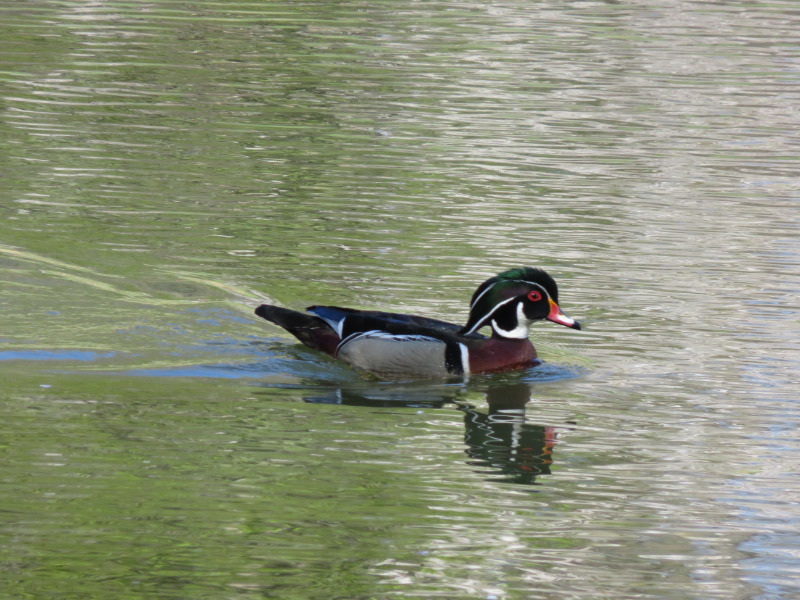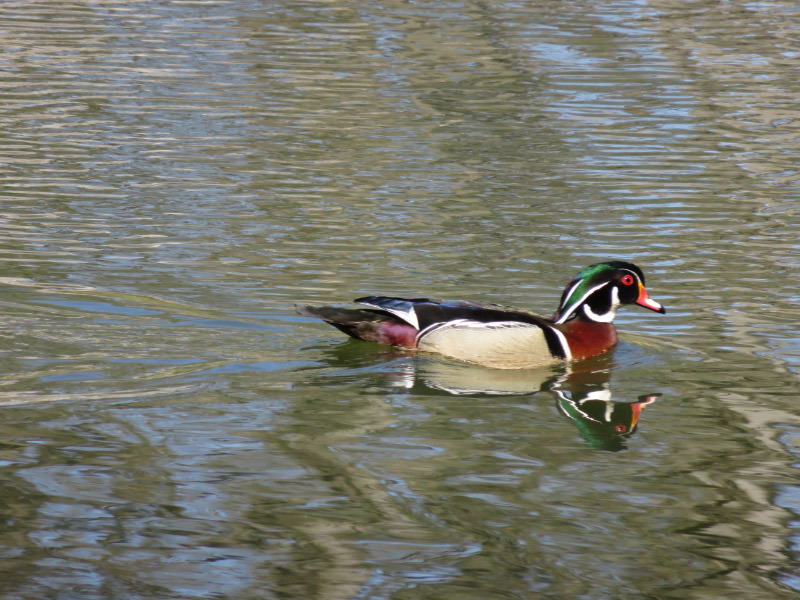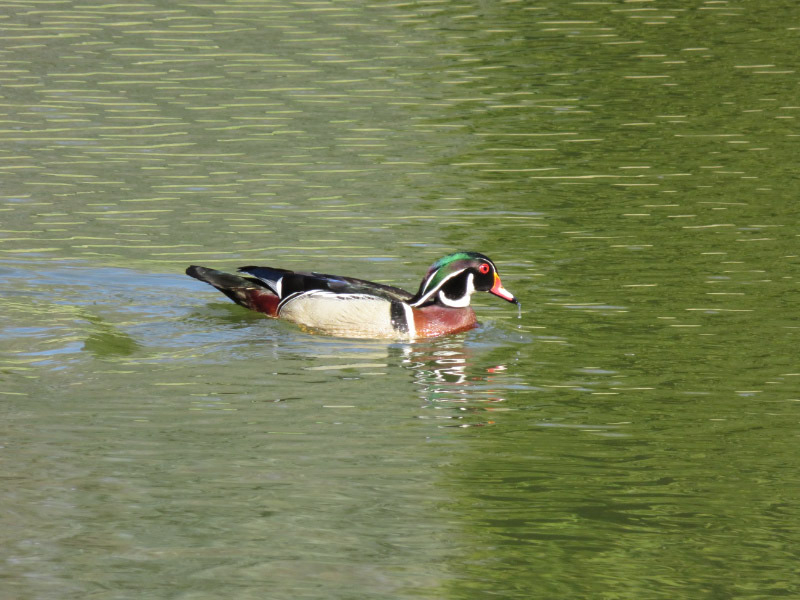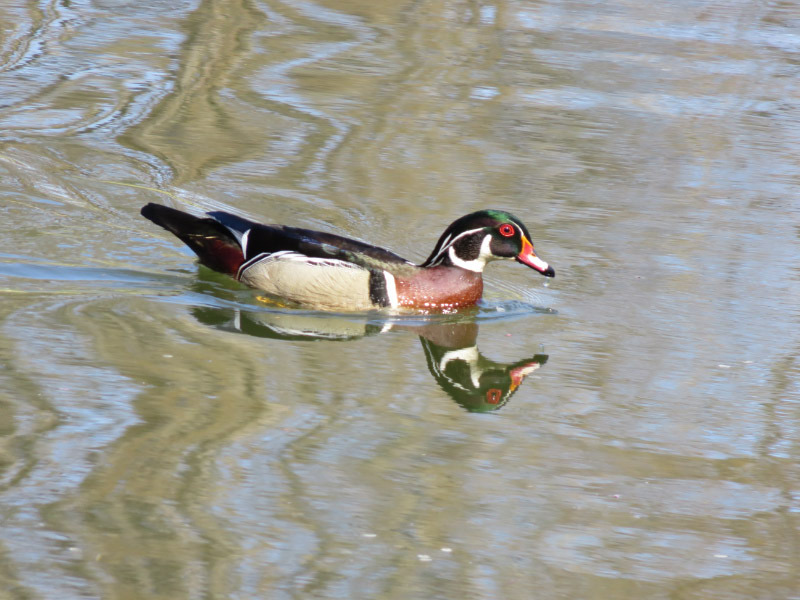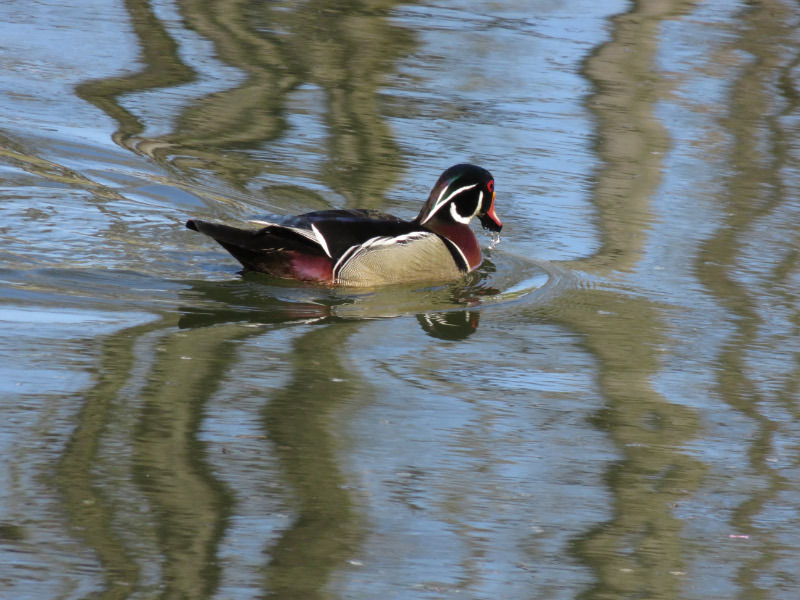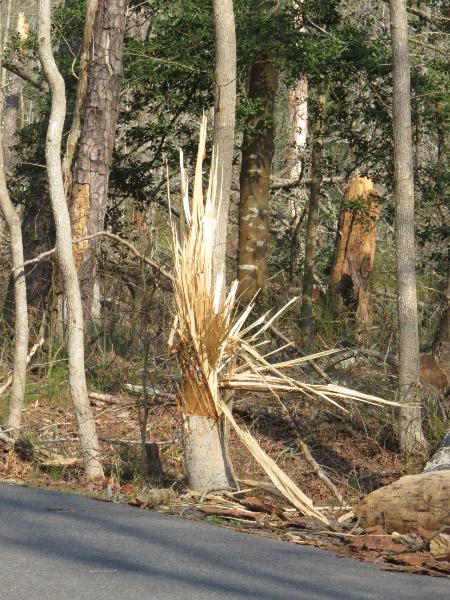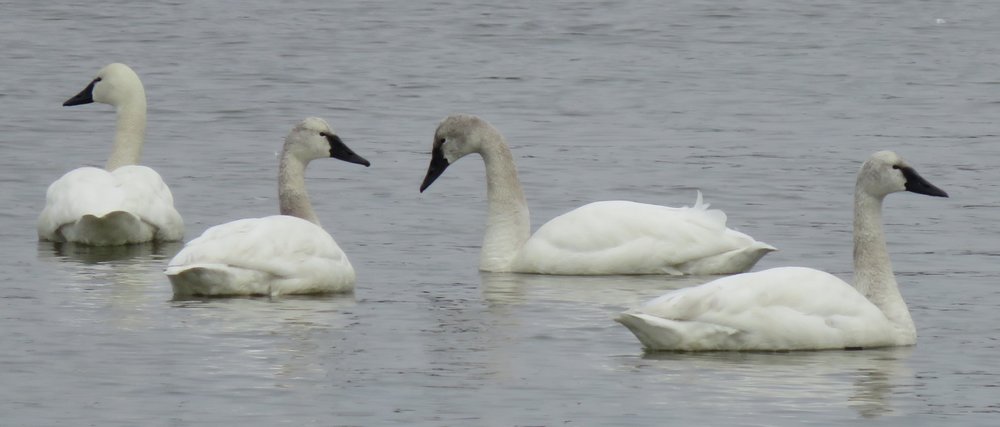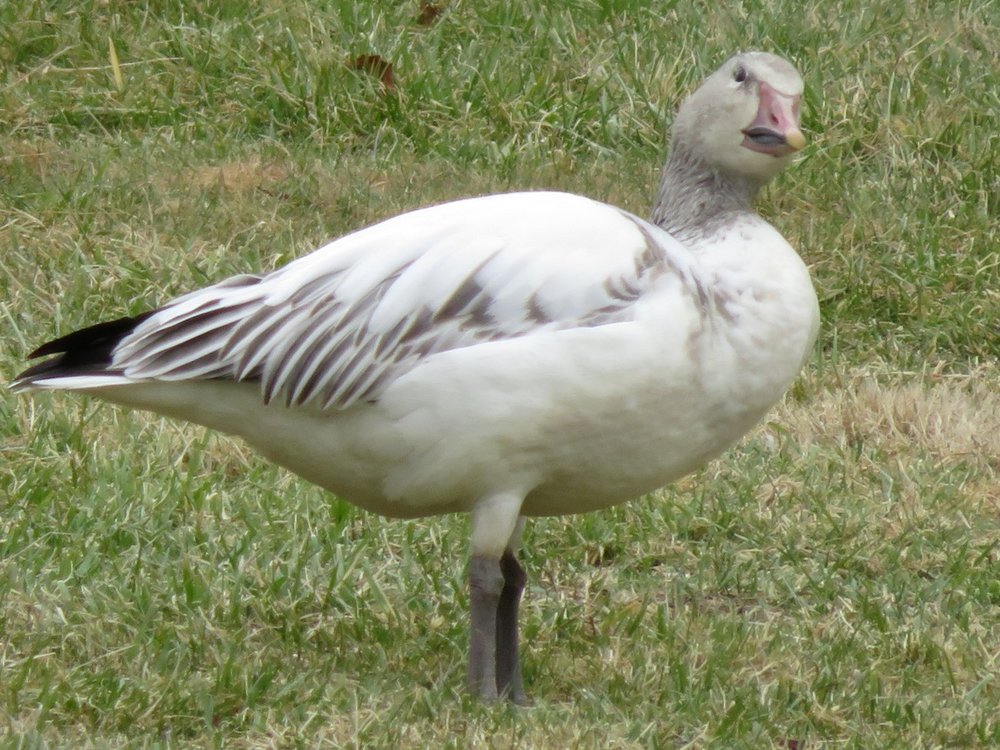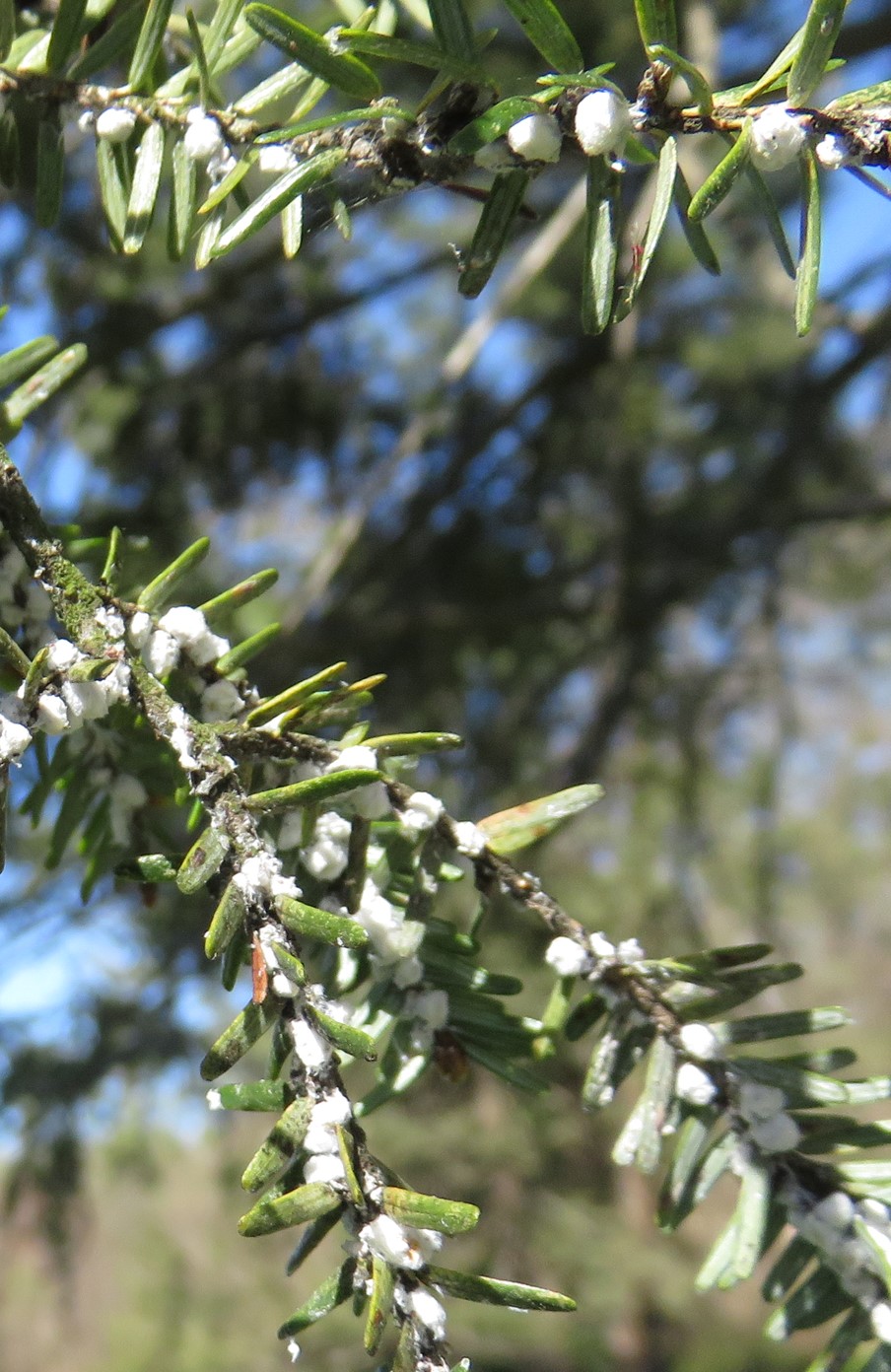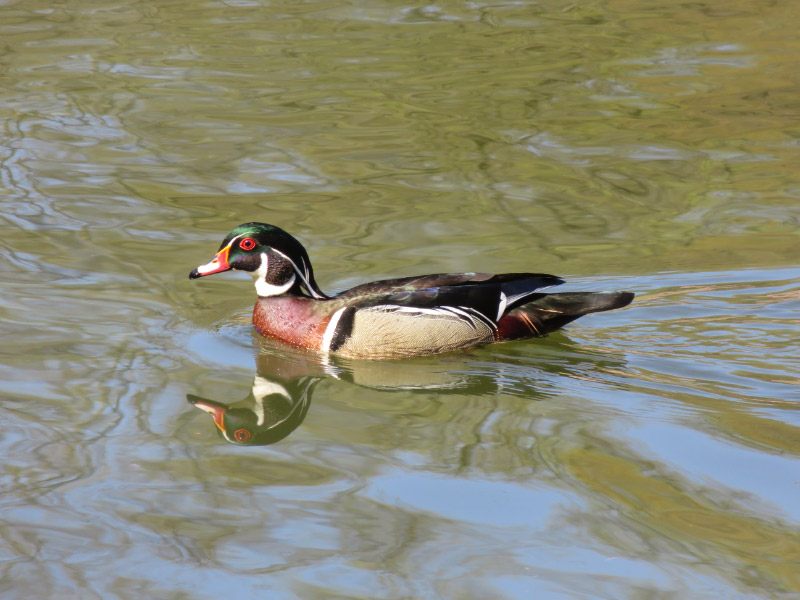Wood Duck at Brookside Gardens
/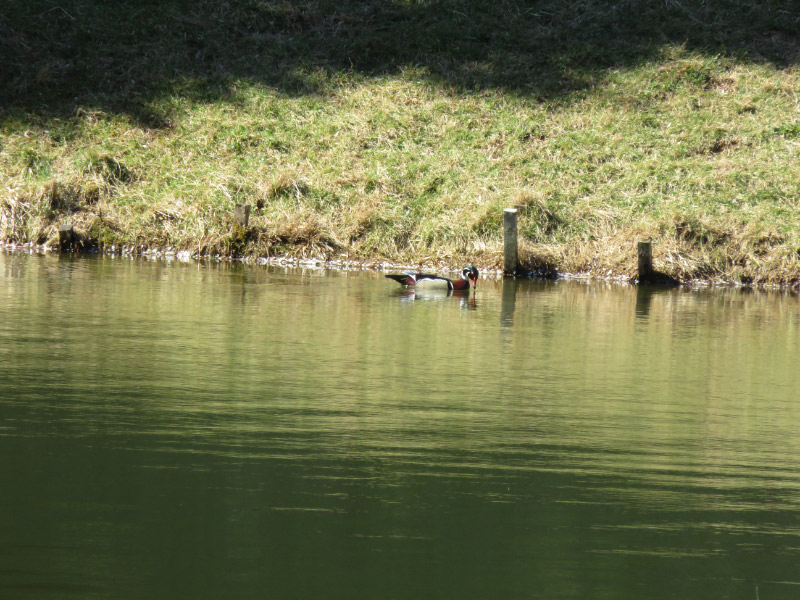
Last week I saw my first wood duck – a lone male sharing the pond at Brookside Gardens with a lot of Canadian Geese (the usual birds there) and at least one red-eared slider. The first picture I took was from pretty far away but I knew it was not a mallard right away.
The bird swam around gleaning edibles from the water surface. I took pictures from every angle and have selected my favorites for the slide show below. I was fascinated by the bird itself – sometimes the water being calm enough to reflect the head and the red around the eye – other times the water creating moiré patterns – the color of the water changing depending on the way the light reflected. The 4th image of the slide show has the red-eared slider poking hits nose out of the water; based on the side of its nose, it must be a big turtle. I hope the wood ducks find a pond near their nest with fewer turtles since the turtles at Brookside are big enough to take ducklings.
As I started away, I overheard a little boy point out the duck to his mother. She told him that it was probably a mallard. He, very confidently told her, “No, it’s not.”
The wood duck flew up and out of the garden as I continued my walk.
When I got home I watched the video of wood duck ducklings dropping from their nest that I included in my gleanings list back in June 2012. The male is not involved with the ducklings….but the video is still fun to watch.

